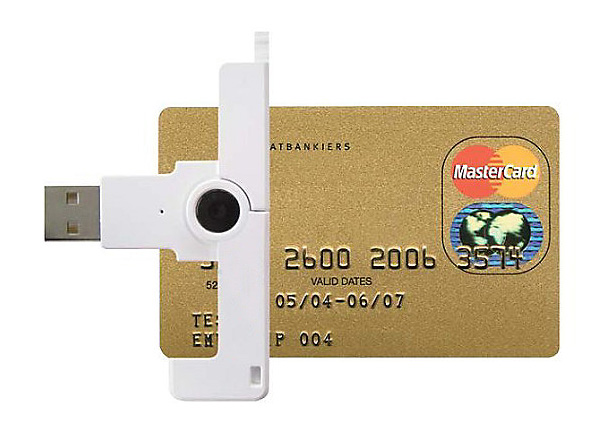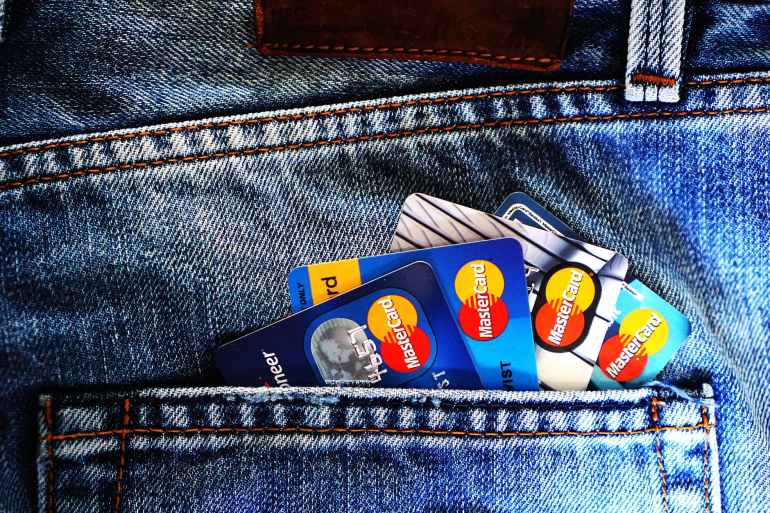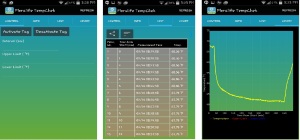If you thought that Brunel University’s in England did with their finger vein scanning payment system was complex then take a look at what Copenhagen Business School in Denmark did with their self-service cafeteria called Spisetuerne.
Copenhagen Business School has a total student populace of over 22,000 with 600+ full time academic staff to potentially utilize the finger vein payments system. With such a large sample size, it is the perfect location to do product testing.

Photo by Pixabay on Pexels.com
What is Spisetuerne, and where is it located?
Spisetuerne was a chain of self-service cafeterias or canteens owned by the that were located within the campus of Copenhagen Business School (CBS) in Frederiksberg, Denmark. They became extremely popular for their many healthy options which included options such as grilled chicken, parfaits, open salad bars among other Danish comfort foods. A large population of students at CBS of 22,829 students meant that there were certainly a lot of hungry students and staff that needed to be served, so they could start eating their smørrebrød. They needed to find a way to do it more efficiently to avoid the lines that would eventually build from lunch rushes.
To see what types of Danish foods that these students were eating take a look at their Foursquare:

Photo by kira schwarz on Pexels.com
To solve this problem, a team of technology companies which included FingoPay, Hitachi, Dankort and Nets decided to partner together to create a seamless approach to payments that would not even require the use of a wallet or phone. Why replace these? Well, both of these options do take a considerable amount of time especially if the student needs to pull out the right amount of cash or open the app while the phone lags. The Pay-with-Your-Finger system was based around using the Hitachi H-1 Finger Vein Scanner along with someone’s registered finger vein template that they had on file with Dankort.
With a transaction time of less than 3 seconds or less for approval, students would be able to quickly buy their lunch and eat it before their next class.
They would also have a much more positive experience with their checkout which may not be the case if they had to wait for the card reader to approve their credit card.
The most crucial part is developing a positive attitude towards the new technology as it would start to build an acceptance of using that in other locations. Thereby, creating a strong reason to expand this to new retail channels.
How did Spisetuerne adopt contactless biometric payments?
In April 2018, the first Spisetuerne was set up with FingoPay at the Solbjerg Plads location as FingoPay was using this campus as a testing ground to see how many people would adopt this payment platform and stick with it. They had already had seen success with applications in their native U.K. with Brunel University incorporating it within their CostCutters location which used it as payment.
They partnered with payment solutions company, Nets to process the payments while also doing so with Dankort to create a platform that was already established as Dankort is similar to Visa and Mastercard in the U.S.
The Pay-with-Your-Finger system targeted millennials who are known to be interested in new technology because exposure in their youth to an assortment of technology such as smartphones, tablets and internet-based applications. In addition, these companies understood consumer purchasing trends towards self-service retail. The millennials are Dankort the future customers at grocery stores as many will continue on to start a family. They are also keener on online shopping which will certainly require significantly more security.
The vision of all these partners is to create widespread adoption of finger vein payments which would be incorporate in retail businesses of all sorts. If they can influence them while they are young, in the future when they are in positions of power, they may look towards this technology to solve their business’ problems.
Plus, given that the student population is over 20,000 (large sample size), there is a lot of legroom to work with when it comes to gathering feedback and potential new ideas. It serves as a central gathering point for students when they want to eat but also study which inspires consistent purchases.
Tx Systems is a trusted source for Hitachi Products
If you are located in the U.S. and want to start implementing a finger vein authentication scheme for your retail location then we have the Hitachi Finger Vein Scanner for you. Tx Systems has over twenty years of experience in the cybersecurity space and has provided our products to some of the largest players (Fortune 500) in multiple verticals. We carry the same exact finger vein reader (Hitachi H-1 KCA-110 Finger Vein Scanner) that FingoPay uses for their in-store scanners. With the convenience and cleanliness of contactless payments, robustness of security protocols and the quickness of authentication, you can trust this new way of securing your customer’s payments.
What is FingoPay?
FingoPay founded by Nicholas Dryden in 2012 with parent company Sthaler (biometrics service provider) est. 2016 to create a new method of contactless payment at check-out. It was initially started as a means to solve the issue at music festivals/events for collecting payments (cash and credit/debit cards) from attendees such as long lines and theft. This was in an effort to secure payments that were traditionally done through cash or smart cards (credit and debit). They now look to using the technology for age verification, identification and much more.
What FingoPay stands for and their mission towards creating an easier identity for all people that is within each person.
What is Dankort?
Dankort (a credit/debit card) was released in 1983 starting off with manual credit card reader support and integrating the latest technologies of the day such as the magnetic strip, EMV chip and even contactless technologies such as NFC. These cards are available at all banks in Denmark and are similar to how you would go to a bank to obtain a debit card from card giants such as VISA and Mastercard, Dankort is the Danish version of those companies.

Photo by Pixabay on Pexels.com
How does the checkout process work?
It is considered a naked payments system meaning that it is a completely contactless without the need for your phone or wallet and can be purchased without needing a PIN to verify your transaction. It does not even matter how much you purchase too.
So, your finger veins can hold not only the value of your bank account, but the key to discounts and the receipt for their order
It utilizes Hitachi’s VeinID technology which is found in Hitachi’s H-1 Finger Vein Scanner which relies on the infrared wavelength that takes a map of your finger veins.
For those concerned about security, finger veins are stored in a secure online cloud server database which means that it is encrypted after you provide your scan. Spisetuerne does not keep the data at their retail location, so they will not be a first line of attack for hackers as was the case for many other retail stores.
Most of the process of purchasing a product is not different than if you had used a regular debit or cash.
But, imagine this situation to get a visual of it,
You are a student at CBS that is ready for frokost (“lunch” in Danish) and need some good smørrebrød (an open-faced Danish sandwich) with a wienerbrød (similar to a Danish) that you select from the hotplates and refrigerators. You then go to pay but instead of reaching for your wallet for cash, you decided to try this new contactless payment method. Before doing so, you will need to register your finger veins via the website with your Dankort credit/debit card and its respective bank in order to have the finger vein template (FVT) match together and to be able to complete the transaction. This allows for your bank account to be linked with your finger vein template (FVT). That you saw being promoted at school which is based around finger vein payment from FingoPay. At the checkout counter, you notice a small white reader which is the Hitachi H-1 Finger Vein Scanner with the instructions to pay by simply inserting your registered finger (index or middle finger) into the scanner.
What makes the finger vein scanner so special is that it relies on something that you are which is a human with living blood streams. As a result, it cannot be taken away from you but rather it is unique to every single person out there which means that it cannot be easily copied. No two people have the same finger vein patterns. One of the most beneficial aspects of the finger vein scanner is that it detects whether or not the veins are alive or not meaning that someone cannot steal your finger to pay with your account. Oxygenated blood must be present in order to verify your account. You must be alive and present in order for it to work.
The transaction times are quite fast meaning that you will not be standing there waiting for it to finally be read or waiting for your credit/debit card to be approved.
All of this is based around Nets, the payment solution provider, that actually stores your finger vein template on their cloud-based server which is securely encrypted when being transferred from the POS system and stored to their cloud-based server. It cannot be used by anyone to be reverse engineered.
After placing your registered finger into the scanner, you will be given either an approval or denial depending on if it could accurately read your finger. Don’t think you can game the system!
You also have the choice to unlink your account if you would rather stick to the Dankort mobile app or a physical credit/debit card.
You are now ready to enjoy lunch!
How success was Spisetuerne at adopting contactless biometric payments?
The great news was that it was readily adopted by 800 students on campus who had felt that the technology was both convenient and reliable. Given that this marketing pilot project was supposed to last six-months, the companies were able to collect a sizeable amount of data given that there were over 6000 transactions over this time period. As a result, the student union which run the cafeterias decided to make it a permeant feature of the cafeteria that is well established with. Considering that this was initially a test run, it is safe to say that it was a success.
So, 10% of total transactions made at Spisetuerne were made with a finger vein scan when using a Dankort which is coming from a country that has 50% adoption of contactless payment methods.
All of these companies concluded that there was high demand to use FingoPay and the Hitachi H-1 Finger Vein Scanner to solve problems related to long lines, long queues and payment security.
Interestingly enough, as of 2020, Spisetuerne went bankrupt during the early stages of the government lockdown because of the lack of student purchases. The campus was shut down to students and faculty in mid-March 2020 because of government orders which did not allow the support of the student government and the Danish government.
Where can I find out more about the Hitachi H-1 Finger Vein Scanner?
If you want to incorporate contactless payments into your retail location similar to Copenhagen Business School or Brunel University, then take a look at the Hitachi H-1 Finger Vein Scanner.
Tx Systems offers the Hitachi H-1 Finger Vein Scanner which can be bought directly on our site.
If you are not ready to pull the trigger just yet, then feel free to learn more about the product through the included brochure and datasheet to have a better idea if this would fit with your restaurant or retail location.
Author: Carl Hughes, Marketing Intern
A technical hobbyist interested in learning the nitty-gritty of computers.




















 This solution works independently from traditional point of sale solutions and merchant service providers, which eliminates the transaction based fee model, saving on cost of ownership and increasing ROI.
This solution works independently from traditional point of sale solutions and merchant service providers, which eliminates the transaction based fee model, saving on cost of ownership and increasing ROI.








